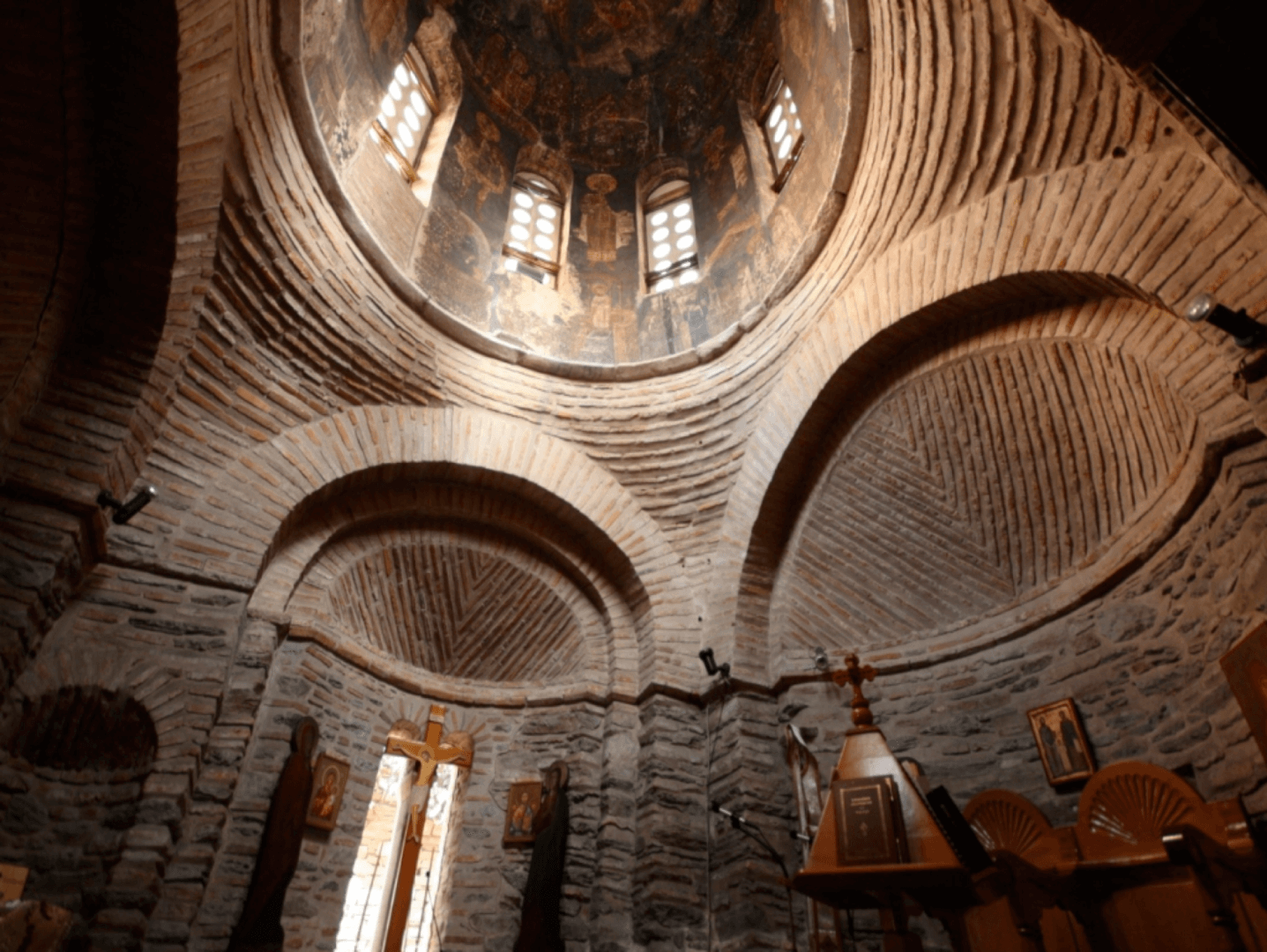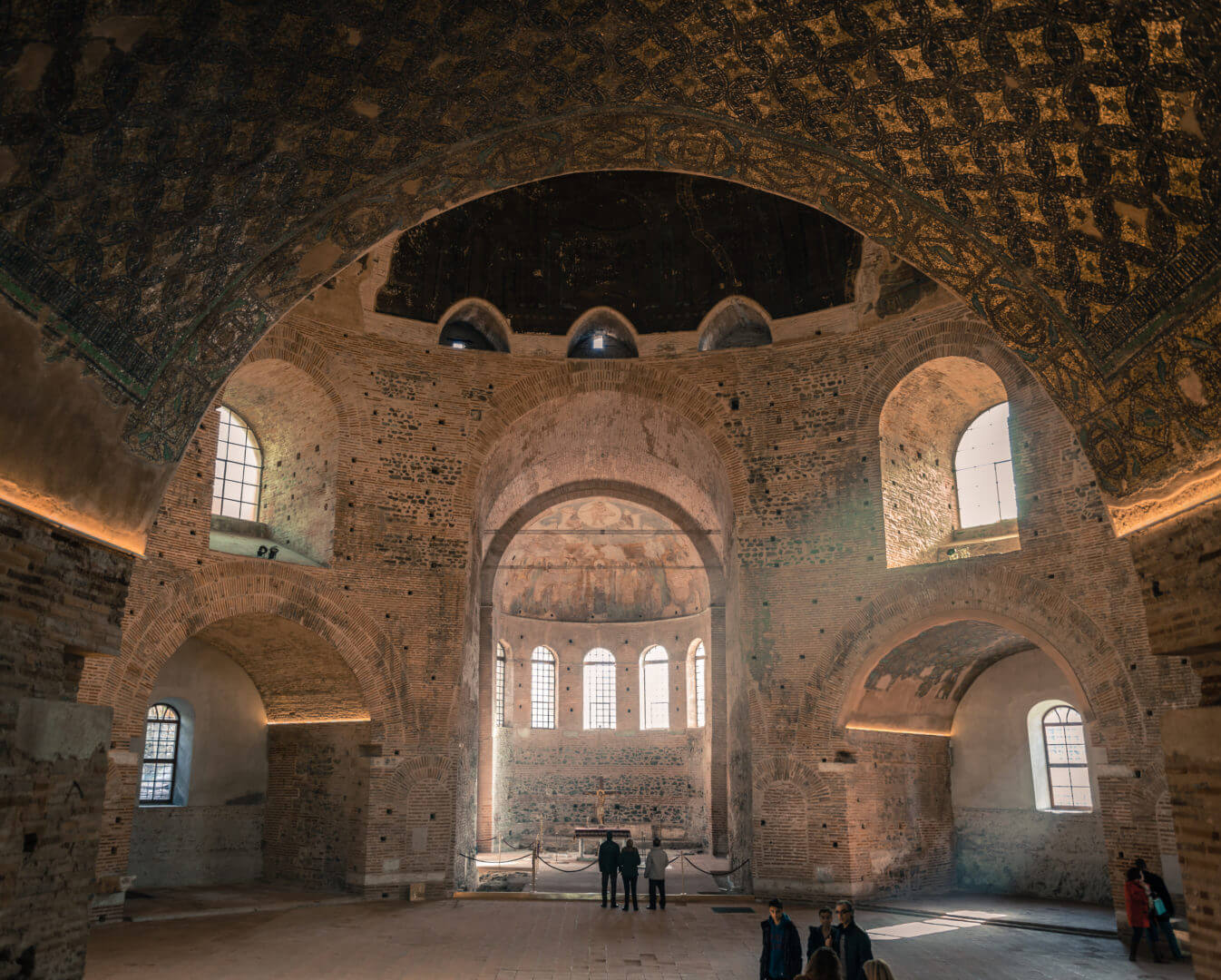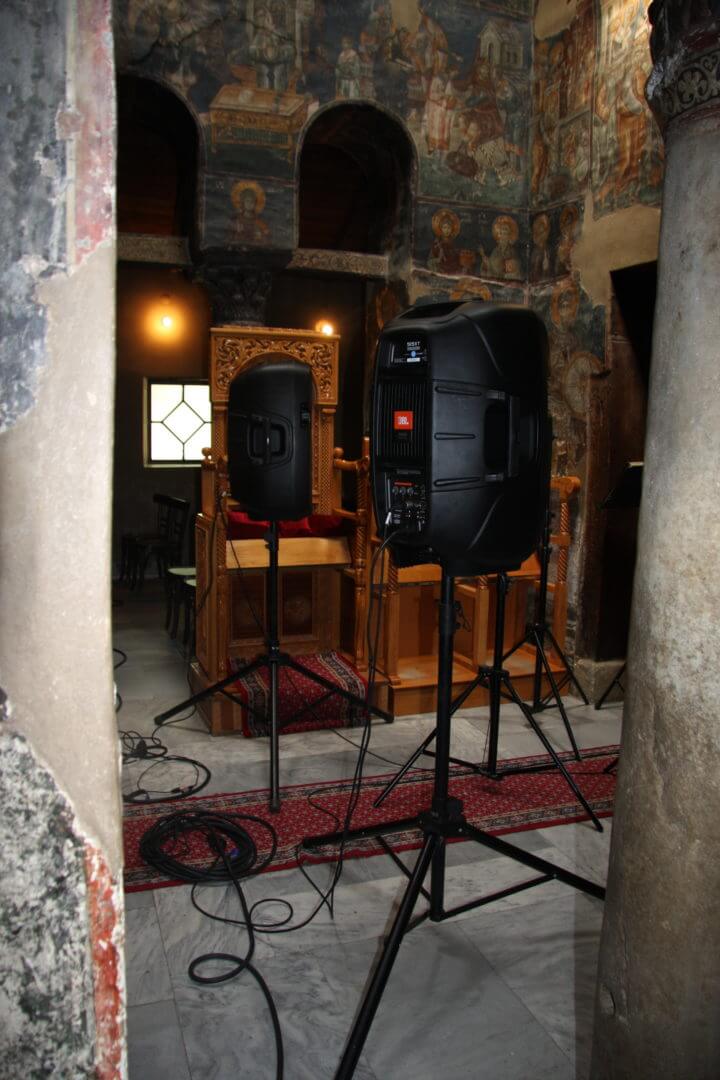Listen to Escape Velocity’s Episode 1: Acoustic Museums
Chris Kyriakakis, founding director of USC’s Immersive Audio Lab and a USC Viterbi electrical engineering professor, lived his childhood in their shadow.
“As a boy, I was captivated by the sound of the city’s churches,” Kyriakakis said. “The first thing that hits you when you walk into these ancient spaces is the silence. When a sound finally drops, it completely envelops you.”
Though his career path took him far from the city of his birth, Kyriakakis dreamed that one day he’d be able to transport the sacred sounds of Thessaloniki to the world. He wanted to re-create ancient spaces that no longer exist using only sound. He calls them “acoustic museums.”
He imagines pilgrims entering a dark room to be transported into an immersive acoustical journey into antiquity. Ancient structures battered by war, urbanization or natural disasters would be resurrected in a temple of virtual surround-sound.

Imagine walking through the ancient city of Palmyra, Syria, which was largely destroyed last year by the Islamic State, via such an acoustic museum — experiencing 3-D, or “binaural” sound without earphones. Every sound has its own position and orientation: You hear birds chirping out a window to your right, priests talking quietly behind you, the hissing sound of the wind to your back, and approaching children chanting to your right. Palmyra reborn.
“Positional sound is what makes virtual reality experiences so convincing,” Kyriakakis said. “You’ll always feel the VR goggles on your eyes, but with sound we can truly suspend your disbelief. You’ll have to duck your head from the sounds coming at you.”
Kyriakakis’ research interests lie at the intersection of acoustics, psychoacoustics and audio signal processing. Hear him clap his hands as he enters a room to test its acoustic qualities.

These days he’s working to solve acoustical and perceptual limitations that degrade audio quality in every electronic device that has speakers and ears. One day, when we’re able to converse with our refrigerator, we can thank Kyriakakis that it understands us.
Through his audio tech company, Audyssey, Kyriakakis holds several patents on products found in millions of homes, cars, movie theaters and soon, PCs and mobile devices. In short, Kyriakakis lives and breathes sound.
 Viewers take in the interior of the Rotunda of Galerius in Thessaloniki, Greece. (Photo/Aivita Lejniece)
Viewers take in the interior of the Rotunda of Galerius in Thessaloniki, Greece. (Photo/Aivita Lejniece)
So when Sharon Gerstel, UCLA professor of Byzantine art history and archaeology, invited him to record chants in ancient churches in Thessaloniki over the summer, Kyriakakis loved the sound of it. He joined Gerstel as the co-primary investigator of an international project.
Their team included James Donahue, a professor of music production and engineering at the Berklee College of Music and a recording engineer for the Boston Symphony Orchestra; Amy Papalexandrou, a professor of architectural history at Stockton College in New Jersey; Konstantinos Raptis, an archaeologist in Thessaloniki; and Spyridon Antonopoulos, a musicologist from City University London.
Gerstel had spent her academic career studying ritual and art, particularly focusing on monumental painting. Involved in numerous excavations in Greece, she was now unearthing a theory she wanted Kyriakakis to test in Thessaloniki.
“The ancients were far more aware of acoustics than we think,” Gerstel said. “Imagine the ability to hear the difference and understand how buildings had changed over time. Is it possible that church designs evolved to optimize the sound of liturgical music?”
The question intrigued Kyriakakis: Could this project lead the way to creating our first acoustic museum? he thought.
Kyriakakis packed his latest instruments in audio recording technology and traveled home, back into the 14th century.

It was an important starting place because the 14th century marked the end of a 500-year period when Byzantine churches shrank in size. Traditional scholars suggested it was the result of the dwindling size of monastic communities.
But it was also a time of revival in sacred art and music. The paintings and mosaics in churches began to flesh out the chants with inscriptions from hymns and singers gesturing to one another from opposite walls, as if conversing. The music also changed into a form called kalophonic, or beautiful voice, with soloists embellishing the hymns to create a more soulful, personal expression.
“We also began to see the proliferation of domes,” said Kyriakakis. “Early churches were rectangular, barn-shaped structures. Domes played a crucial role in the amplification of sound.”
Gerstel believes the placement of frescoes inside the churches was not merely ornamental. The artworks instructed the chanters where to stand when they performed, especially when certain parts of the liturgy needed to be emphasized and made more intelligible.
“These new churches were designed to be smaller, and were even decorated differently to enhance the performance of the chants,” Gerstel said.
To test her intuition, the team had a single chanter stand at the threshold of the sanctuary in the church of St. Nicholas Orphanos facing east, while Gerstel stood below the image of the chanters. “The sound rolled out through the portal as if through a microphone,” Gerstel said, “as if the monks [in the painting] were singing.”

Kyriakakis observed the holes in the walls behind which large clay vessels were hidden. The ancient vessels had acoustical absorption qualities and were tuned to specific frequencies to achieve the desired levels of reverberation.
“The sound penetrates you,” said Kyriakakis. “You are no longer just standing there listening, you’re wrapped in it.”
Gerstel, who has also written extensively on Byzantine empresses, village widows and rural nuns, wants to return with Kyriakakis to Thessaloniki and study the effect of the female voice on church design.
Meanwhile, Kyriakakis is engineering the first acoustic museum — an ancient virtual space where our modern ears can reach out and experience the ethereal.




